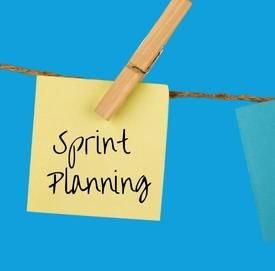BLOG

Agile Ceremonies: Retrospectives That Don’t Put Your Team to Sleep
Held after every sprint or project, a sprint retrospective meeting is an excellent way for your team to reflect on the successes and failures of the previous sprint, including the goals achieved, the work that was done, and the ideas to improve future performance or generate better outcomes. The secret trick to organizing engaging retrospective meetings is to keep changing the retrospective format every once in a while, as agile retrospective ideas can become stale if you keep following the same format and agenda every time.
What Is a Sprint Retrospective in Agile?
Sprint retrospective in agile is an essential part of the scrum framework for managing, delivering, and developing complex projects. A sprint retrospective can be defined as a recurring meeting that is held at the end of each project milestone or sprint between the agile teams and the scrum master. The purpose of the retrospective meeting is to discuss what went well in the previous sprint and the changes needed to attain continuous improvements in the future.
However, unlike any other meeting, during an agile retrospectives meeting, the scrum master experiments with different retrospective techniques to make sure that the team feels comfortable and is open to the discussion throughout the meeting. Primarily because there is no gain from a sprint retrospective meeting if the team members aren’t willing to talk about the problems and take responsibility for future improvements.
3 Agile Retrospective Ideas
Even though there are many ingredients that make a good agile retrospective meeting an excellent one, the most important of them include freedom of communication, openness, psychological safety, honesty, and the desire to experiment only to improve performance for the next sprint. So, if you want to switch things up for your team’s next retrospective meeting, here are three fun retrospective ideas that you must try:
Mad Sad Glad
Expressing your true emotions is one of the most challenging yet powerful things that one can do, and this is precisely what this retrospective tool asks your agile team members to talk about.
During a mad sad glad retrospective session, provide your team with sticky notes and ask them to take their time to write their observations related to the previous sprint. Once everyone is done, make three columns on a whiteboard and label them “Mad,” “Sad,” and “Glad.” Now ask the agile teams to stick their notes under the appropriate sections. Doing so will help the agile coach understand the team’s emotional health in a better way and what changes are required, if any.
In case you are leading remote teams, you can implement the same agile retrospective idea using digital sticky notes and a virtual meeting room. In either case, if you want to truly connect with your team, “Mad Sad Glad” is one of the agile retrospective ideas you must try.
Sailboat Retrospective
If you are looking for a creative, agile retrospective technique that will help you define the vision for your team and identify the challenges they faced along the way, Sailboat retrospective has got you covered.
During a sailboat retrospective, show the agile teams a picture of a sailboat in the ocean and ask them to compare the success and failures of the previous sprint while propelling the following:
- Anchor: What held us back?
- Tailwind: What kept us going or drove us forward?
- IceBerg/Shark: What obstacles did we face?
- Paradise: What milestones and achievements are we working towards? What are our goals?
Once you have all the pointers, write them down on sticky notes and start a root cause analysis of each problem/risk in order to develop positive outcomes for the next sprint.
Start Stop Continue
If you want to turn a boring and silent team meeting into an active discussion, the “Start Stop Continue” retrospective idea works wonders. It not only helps you identify the action items which you can improve for the next sprint but will also help you in reinstating the team habits by defining what the members should stop, start and continue doing.
Instead of listing topics, grouping teams, and carrying out discussions, this retrospective tool helps you to identify the real problem and find a solution without wasting time. Implement this retrospective technique by creating three columns labeled:
- What should the team do?
- What should the team stop doing?
- What should the team continue doing?
Ask each team member to share their opinion by writing points on sticky notes and pasting them in the corresponding column. Now use these pointers to make new rules and KPIs for your team.
The key to the success of any of the agile retrospective ideas is to go back to assess what was done, point out the challenges or failures, discuss possible solutions and implement them with the intent to get improved results in the future.
So, what are you waiting for? Incorporate the above-mentioned agile retrospective ideas to make your team’s same old agile sprint meeting more engaging, fun, and interesting.
YOU MAY ALSO LIKE

August 04, 2022 - Jon A.
Agile Ceremonies: Daily Scrums That Aren't a Waste of Time

June 05, 2022 - Jon A.
How to Plan an Agile Sprint in Software Development


